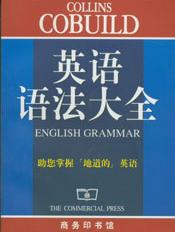牛津实用英语语法-第68章
按键盘上方向键 ← 或 → 可快速上下翻页,按键盘上的 Enter 键可回到本书目录页,按键盘上方向键 ↑ 可回到本页顶部!
————未阅读完?加入书签已便下次继续阅读!
我看见她在河里时,吓坏了。那个地方水流非常危险。
在口语中,for从句前常稍停一下。在笔语中,在此处常有一个逗号。有时也用一个句号断开,如最后一个例子所示。上面三个例句中也可用because,但用for更好些。
?
'Amber demo'
331 用于表示时间的when,while,as
?
A when常与一般时态连用:
1用于表示一个动作与另一个动作在同一时间发生,或一个动作在另一动作所延续的时间范围之内发生:
When it is wet the buses are crowded.
天下雨时公共汽车就很拥挤。
When we lived in town we often went to the theatre.
我们住在城里时常去剧院看戏。
2一个动作紧接着另一个动作:
When she pressed the button the lift stopped.
她按了按键,电梯停住了。
B as用于表示下列情况:
1第二个动作发生在第一个动作结束之前:
As I left the house I remembered the key.
正在我要离开家时,我想起了钥匙。
这意指在我离开家这个动作还没有完成时就想起了钥匙,很有可能我还在门口处。While I was leaving(我正要离开时)的意思与此相同。但是When I left(当我离开后)意指离开的动作已完成,门已关上了。
2 两个动作同时发生:
He sang as he worked.
他边走边唱。
3两个动作同时进行:
As the sun rose the fog dispersed.
太阳升起,浓雾散去。
As it grew darker it became colder.相当于:
The darker it grew,the colder it became.
天色越暗,天气越冷。
As she came to know him better she relied on him more.
随着她对他理解的加深,她也更加依赖他了。
As he became more petent he was given more interesting work.
随着他能力的增长,他被托付以更有意义的工作。
如果这里使用when,就会完全失去同时并进或比肩发展的意思。
4 as意为while(在那一段时间里):
As he stood there he saw two men enter the bar.
他站在那儿时,看见了两个男人走进了酒吧。
as在这里的用法没有特别的优越性,用while更为安全。
?
'Amber demo'
332 as意为when/while(当……时)
或because/since(由于)
?
A as(=when/while)的用法的限制
这里as主要与表示动作或发展过程的动词连用,一般情况下它不与第168节中所列的动词连用,除如上面B3所示有发展之意时例外。在一般情况下它也不与live,stay,remain这类动词连用。
B as与上述动词或同类动词连用时,一般均表示because/since (由于):
As he was tired…相当于:
Because he was tired。。。
因为他太累了……
As he knew her well…相当于:
Because he knew her well……
因为他了解她……
As it contains alcohd。。。相当于:
Since/Because it contains alcohol……
因为它含有酒精……
As he lives near here…相当于:
Since/Because he lives…
因为他住的地方离这儿很近……
C as与多数动词连用时,可以是两种意思中的任一个意思:
As/While he shaved he thought about the ing interview.
他边刮胡子,边想着即将进行的面谈。
As/Because he shaved with a blunt razor he didn’t make a very good job of it.
因为他用一把钝剃须刀刮胡子,所以刮得不好。
如果在这个问题上没有把握,最好用while或because。
D as+名词时意为when/while(当……时)或because/since(由于):
As a student he had known great poverty.相当于:
When he was a student he had known great poverty.
他当学生时,经历过很贫困的生活。
As a student he gets/got in for half price.相当于:
Because he is/was a student be gets/got in。。。
由于是学生,他付半价就入场了。
As a married man,he has to think of his family.相当于:
Because/Since he is a married man。。。
作为一个有妇之夫,他必须考虑他的家庭。
as在这里意为 when/while时,后面常跟完成时态。
as意为because/since时,后面可跟任一时态。
?
'Amber demo'
333 as,when,while意为although(尽管),
but(但是),seeing that(鉴于)
牋
A 只有在形容词+as+主语+to be/to seem/to appear这一结构中,as才意为though/although(尽管):
Tired as he was he offered to carry her.相当于:
Though he was tired he offered to carry her.
尽管他很累了,他还主动提出要背着她。
Strong as he was,he couldn’t lift it.
尽管他力气很大,他仍提不起这个东西。
B while可意为but,用于表示强调对比:
‘At sea’means‘on a ship’,while‘at the sea’means‘at the seaside’.
“At sea”意为“在船上”,而“at the sea”意为“在海滩上”。
Some people waste food while others haven’t enough.
一些人糟踏食物而另一些人却食不果腹。
while可以意为although,这时常放在句首:
While I sympathize with your point of view I cannot accept it.
尽管我认同你的观点,但我不能接受它。
C when可以意为seeing that/although(鉴于)。因此它同while 很相似,但主要用于引导使另一个动作显得不合理的陈述句。
它常用在一个问句里,但不是一定如此:
How can you expect your children to be truthful when you yourself tell lies?
你自己都在撒谎,怎么能指望你的孩子们诚实?
It’s not fair to expect her to do all the cooking when she has had no training or experience.
她没有受过烹调方面的训练,也没有这方面的经验,让她把做饭的事全部承担下来是不公平的。
D 请务必不要搞混when与if的用法。
When he es(等他来了)意为我们肯定他会来的。If he es(如果他来了)意为我们不能肯定他是否会来。
(关于if用于条件句,参见第二十一章。)
?
'Amber demo'
第三十三章?目的?
?
'Amber demo'
334 不定式表示目的
?
表示目的时可以使用下列各种方法:
A 单独的不定式:
He went to France to learn French.
他去法国学习法语。
They stopped to ask the way.
他们停下来问路。
当主要动词之后有一个间接宾语时,不定式可能指这个间接宾语而不是指主语:
He sent Tom to the shop to buy bread
他派汤姆到店里去买面包。(该由汤姆而不该由主语“他”去买面包。)
B in order/so as+不定式
in order+不定式意指主语想要做这一动作,或主语很希望这一动作发生。
so as+不定式仅指主语很希望某一动作发生。因此in order +不定式比so as+不定式更为普遍。
in order或so as也常用于以下情况:
1 与否定不定式连用,表示否定性的目的:
He left his gun outside in order/so as not to frighten us.
为了不使我们受到惊吓,他把枪放在了外面。
2 与to be和to have连用:
She left work early in order/so as to be at home when he arrived.
为了在家等他到达,她提前下了班。
She gave up work in order/so as to have more time with the children.
为了能有更多的时间和孩子们相处,她放弃了工作。
3 表示不是近期能实现的目的:
He is studying mathematics in order/so as to qualify for a better job.
他学习数学是为了能有资格做更好的工作。
She learnt typing in order to help her husband with his work.
她学习打字是为了帮助她丈夫工作。
4 有时在较长的句子中,用于强调不定式表示目的:
He was accused of misrepresenting the facts in order/so as to make the scheme seem feasible.
人们指责他为了使计划显得可行而没有如实地把真相说出来。
He took much more trouble over the figures than he usually did in order/so as to show his new boss what a careful worker he was.
为了向新老板显示他是工作非常细心的人,他在这些数字上费了比往常更多的力气。
(但是in order/so as并非必要,有时是可省略的。)
表示目的的不定式位于主要动词之前时,in order/so as可位于句首:
In order/So as to show his boss what a careful worker he was,he took ex- tra trouble over the figures.
为了向新老板显示他是个工作非常细心的人,他在这些数字上费了比平常更多的力气。(但这里的in order/so as也可以省略。)
5 句中有一个间接宾语而要想让不定式毫不含混地指主语时,可用so as/in order:
He sent his sons to a boarding school in order/so as to have some peace.
为了图清静,他把他的儿子们送进了寄宿学校。(这里是指他要清静,而不是他的儿子们。)
比较:
He sent his sons to a boarding school to learn to live in a munity.
为了让儿子们学会在集体中生活,他把儿子们送进了寄宿学校。(是让他的儿子们学会在集体中生活,而不是他。)
但是in order/so as的这种用法不是很普遍,更常说:
He sent his sons to a boarding school because he wanted to have some peace.
他把儿子们送进寄宿学校,因为他想清静点儿。
C in order(不包括so as)可用于强调不定式所表示的是主语脑子里真正想要达到的目的:
—He bought diamonds when he was in Amsterdam!
—That wasn’t surprising.He went to Amsterdam in order to buy dia- monds.
—他在阿姆斯特丹时竟买了一些钻石!
—这并不奇怪,他就是为了买钻石才去阿姆斯特丹的。(不是为了其他目的。)
另外也可用重读第一个动词而省略in order的方法来表示同样的意思:
He'went to Amsterdam to buy diamonds.
他去阿姆斯特丹就是为了买钻石。
D 不定式+名词+介词:
I want a case to keep my records in.
我想要一个盒子来保存我的唱片。
I need a corkscrew to open this bottle with.
我需要一个螺丝刀来打开瓶塞。
注意:这里谈论的是特指的目的。
关于泛指的目的可用for+动名词结构来表示:
This is a case for keeping records in.
这是用来保存唱片的盒子。
A corkscrew is a tool for opening bottles.
螺丝刀是用来开启瓶塞的工具。
?
'Amber demo'
335 用于go和e之后的目的不定式
?
一般在祈使语气或go和e的不定式之后不再使用目的不定式。常用Go and find Bill(去把比尔找来)来代替Go to find Bill;用e and talk to Ann(来跟安说说话)来代替e to talk to Ann。即:两个祈使动词用and连接起来时可代替一个命令+目的不定式。
在一般情况下说:
I must go and help my mother.
我必须去帮助我母亲。
I’ll e and check the accounts.
我将来清理账目。
而不是说:
I must go to help my mother.
I’ll e to check the accounts.
即:用and连接两个不定式结构来代替不定式+目的不定式结构。(参见第246节Ⅰ。)
但如go和e用做动名词或以任何现在时态和过去时态出现时,应带一个表示目的的不定式:
I’m thinking of going to look for mushrooms.
我想去采蘑菇。
I went to help my mother.
我去帮助母亲了。
I’ve e to check the accounts.
我来查账来了。
I didn’t e to talk to Bill;I came to talk to you.
我不是来跟比尔说话的;我是来跟你说话的。
?
'Amber demo'
336 目的从句
?
如目的所指的人与主句中的主语不同,或原主语再次被提到,则必须使用目的从句:
Ships carry lifeboats so that the crew can escape if the ship sinks.
大船上带有救生艇,万一船下沉船员可以逃生。
This kn





